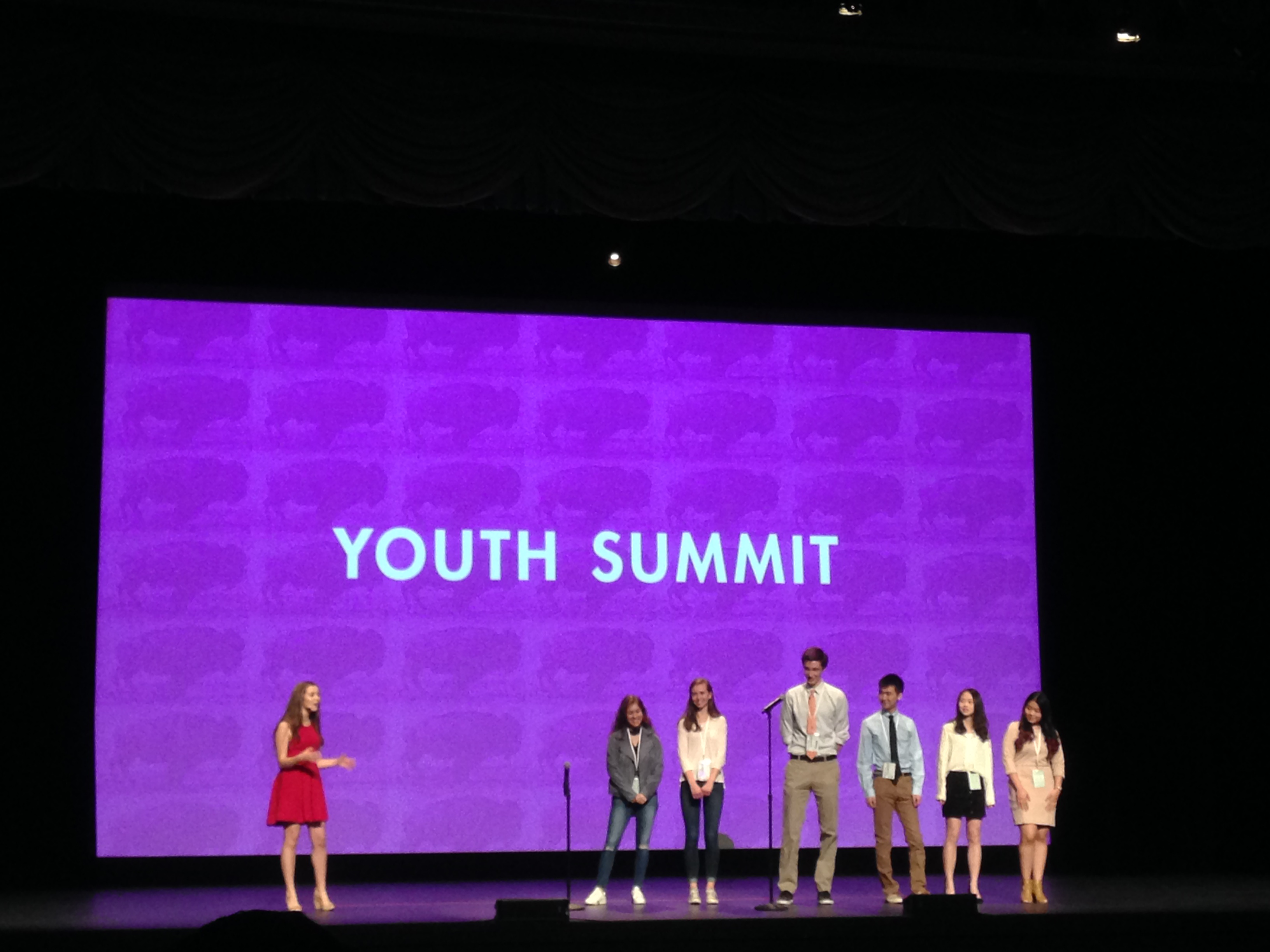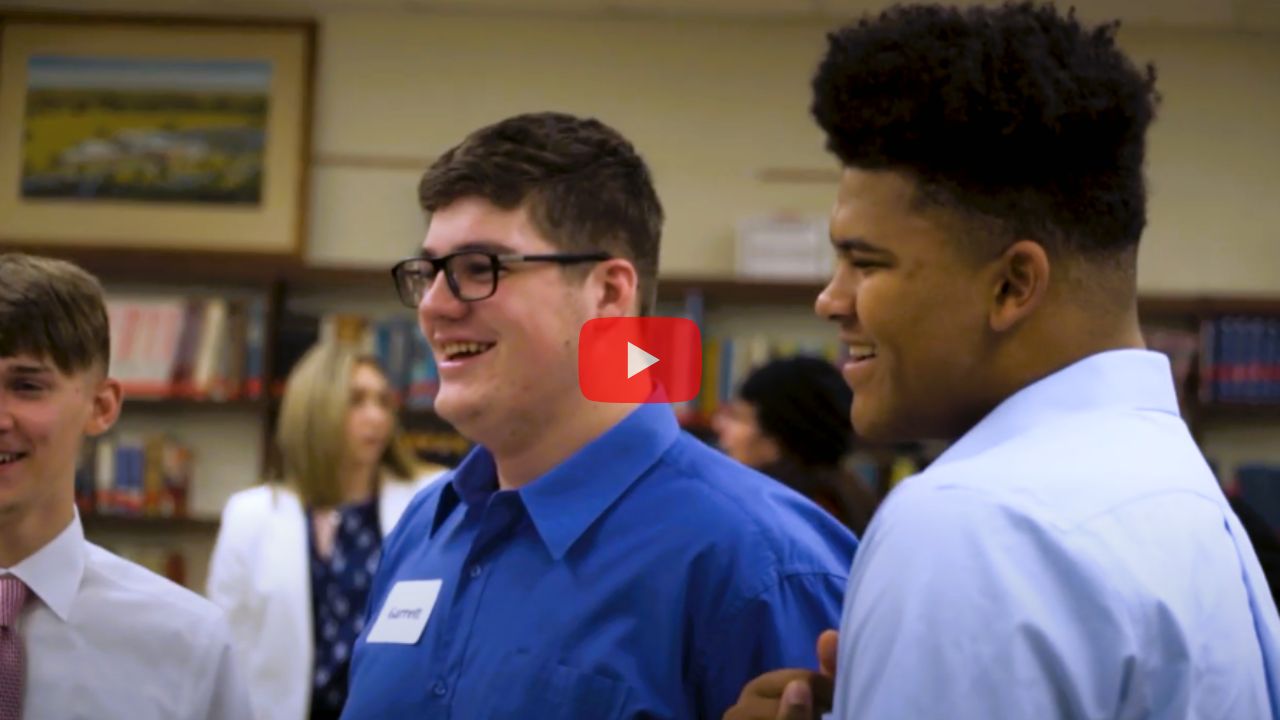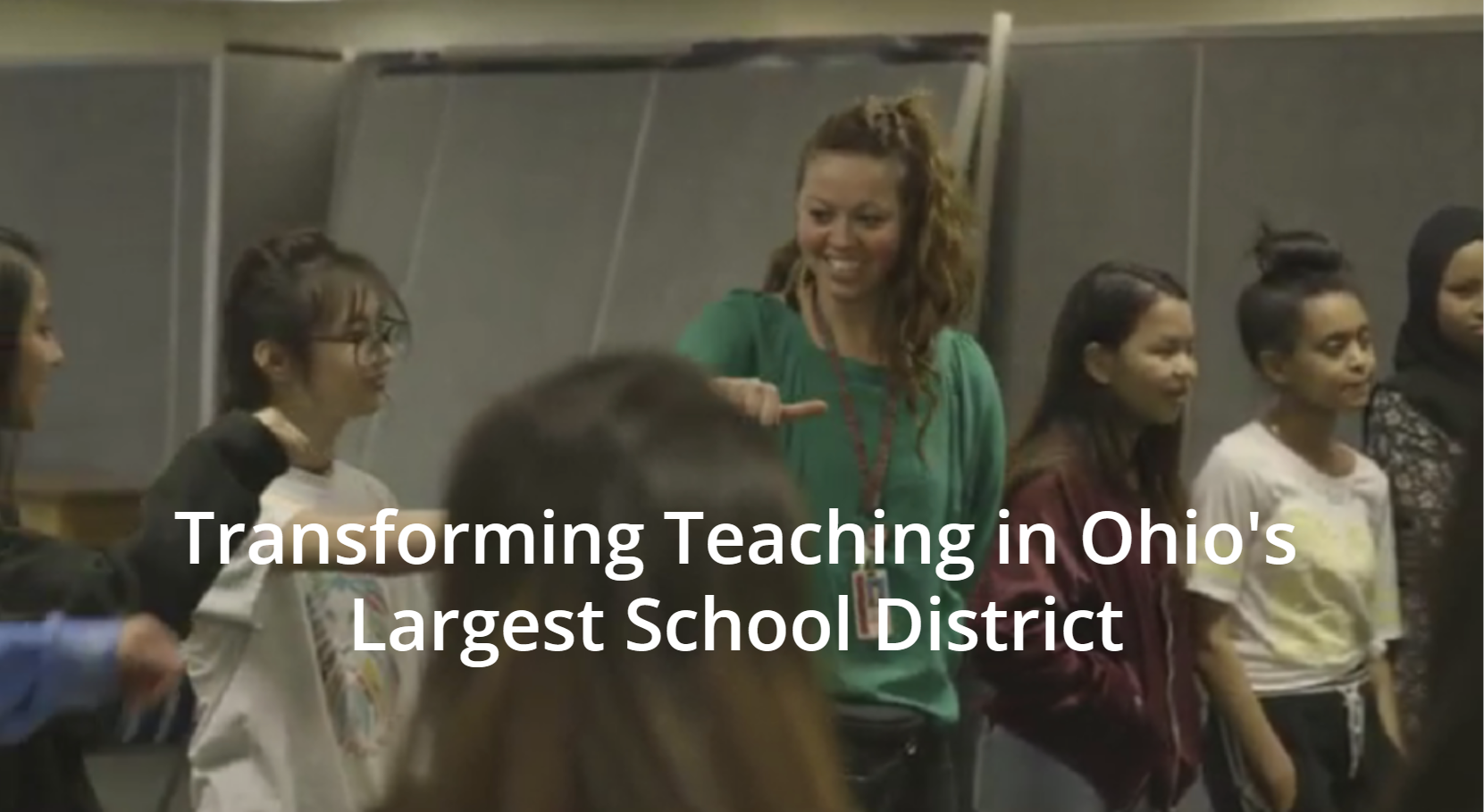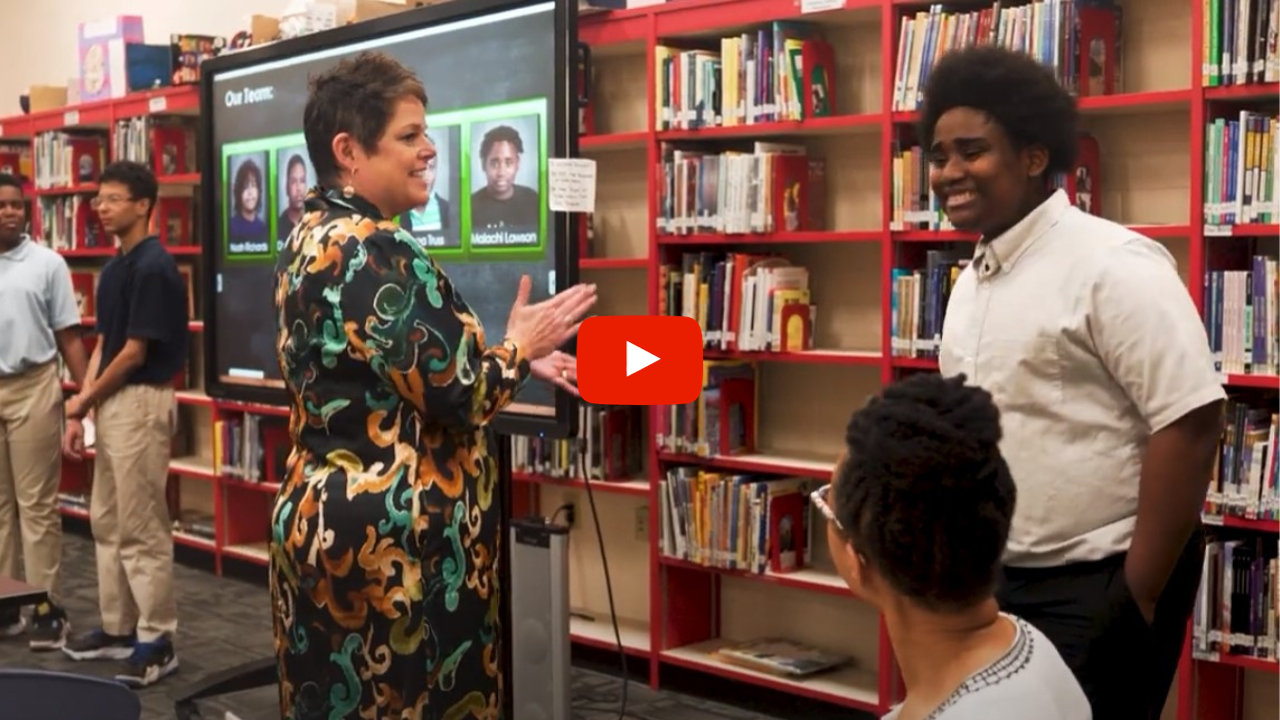In this episode, Doris interviews Sarah Swain, former Science and Entrepreneurship teacher at St. Anne’s Belfield School in Virginia and the incoming Assistant Director of Entrepreneurial Studies at Hawken School. Sarah describes the integration of environmental science into her entrepreneurship course and entrepreneurial skills into her core science courses. They discuss the importance of students learning to identify problems, reflect and collaborate.
Do School Better: A Podcast for People Who Want to Transform Education - Listen to more episodes here
Doris: Hello, Sarah.
Sarah: Hi, Doris.
Doris: I am so excited to hear what you’ve done since the workshop. Tell us all about it.
Sarah: Awesome. I’m so excited to share with you too. So two things came out of the workshop that I’m really excited to share about today. First, I transformed a three-week mini-course on entrepreneurship into a full year-long “Senior Seminar on Social Entrepreneurship and Problem Solving,” was the title. And that was a pilot year-long program, which was super exciting. And then the other part that I really wasn’t expecting leaving the workshop was that I really transformed the way that I present students in my biology classes, in my science classes, with projects and also with lab design assignments.
Doris: That’s really interesting. So how long have you been a science teacher?
Sarah: I’ve been a science teacher for a decade. And I’ve worked at two different schools. And I’ve taught chemistry, biology, honors biology, AP biology, and AP environmental science in that time in different configurations along the way.
Doris: So I’m going to be really interested to hear the way that what you got out of the workshop changed your teaching in your more traditional classes. But talk a little bit about this social entrepreneurship class, this full-year program that you developed. Tell us about that coming out.
Sarah: Wonderful. Well, the smaller pilot of a three-week long intensive course was super fun. And we got kids learning about businesses, trying to design their own, and I wanted to turn it into a full-year class. The school approved and was super excited and suggested that I come to the training in Cleveland. And I just can’t even explain how many resources I got and how great it was from the business model canvas that I was not using, did not really have a familiarity with in the intensive class to the actual approach and a lot of the ideas of how to engage with students and things like New Circle, raising their awareness, and the interpersonal dynamics of teams and assigning students to teams within the business challenges of the longer pilot. So those were some of the specifics that I came out with the knowledge to do.
And then what I had to work with, the canvas that I had to work with, was 75 minutes every other day through an entire year with a group of 14 seniors, primarily because those 14 could fit on a bus, mini-bus, with me to go to businesses and take field trips and go to do market research and work like that within the class. So I took the template, three business challenges, where they were addressing real problems at real businesses in the community, and then a fourth problem where they were going to actually create their own business within that fourth business challenge. Took that template and put it into my community and my time that I had for the course. And there was a really neat kind of dovetail with a local youth entrepreneurship festival towards the end of the year that was the goal for the students to kind of aim towards with their own business designs in that fourth challenge. So it really set up very nicely within my own constraints to use the template.
Doris: Yeah. So in other words, you modeled your class after what I did with Hawken’s Entrepreneurship Class.
Sarah: Absolutely. And with all of the resources that I had gotten in the training, you know, those were there. And it was a really great setup already. I didn’t want to reinvent the wheel. I mean, that was the best thing about coming to the training was that I didn’t have to. And I could play with something that had already been well-established and vetted by you here at Hawkin.
Doris: Got you. So tell me about the actual class. What were a couple of those challenges those first couple challenges?
Sarah: The first challenge was just awesome. There was an alumni out of the school, Saint Anne’s, that I was teaching at that had started with his wife a river canoeing and kayaking outfitter in town. And they had been in business, I mean, six months, one season. And they had so many questions. He threw out the idea of how they could expand their weekday and shoulder season market as a really important challenge for the students to research so that they would actually be able to thrive, not just survive. So it was a critical, pressing question for the kids to answer. And they loved it, including the first field trip day where we went to the outfitter. They experienced what his business was about. And the kids listened to him talk about things like what was their minimum viable product and different economic terms. I couldn’t imagine in a better way for the class to start to catch the kids and get them super excited about a challenge that they were really invested in.
Doris: That’s cool. What was the next challenge?
Sarah: So the next challenge was really much more complex. It went from small local business to more of a regional business. And there was also a component where it was partnered with something that was happening for the school. So it was Southland Energy, and they are an intermediate kind of energy brokerage I guess, for lack of a better term, that helps campuses of all sizes to retrofit their infrastructure to be more energy efficient. And then they actually help finance that engineering feat with the savings from the more energy-efficient equipment that they install into the campuses’ infrastructure systems. So this was like less catchy for the students, right? I had to find some way to really engage them. But, of course, it was for their campus.
And so the first day, we had the engineers and the person who orchestrates the whole project, including our own head of buildings and grounds come and also the business manager at our school come into the class and present the problem to the kids. And we actually went and got in the crawlspaces, and we got in the attic and we saw the infrastructure and stuff that the kids had never seen before, doors that they had never been able to open. And the challenge there was from Southland Energy really needing to know what things had they missed that were really important, valuable energy-saving devices or behaviors that would save more money and energy than they cost? And that was the challenge. And this one was tricky, and it was good.
Doris: Quite meaty, right?
Sarah: Yes.
Doris: Okay. So as somebody who’s been teaching science for many years, what did the students have to learn in order to do, to solve this problem?


Doris: Yeah. I love that you did that. I think that that’s a great example of how, as a teacher, you create systems for yourself to focus on each student’s individual growth. They’re all going to be always at very different places in every aspect. And it’s about the personal growth of each student and not how each student performs against some general rubric. And that’s a rich way to go about that and to discipline yourself as a teacher. So talk about…You said that it changed the way you teach in your regular science classes. Can you talk about that a little bit?
Sarah: Absolutely. So just like I was sharing, you know, in environmental science, I was teaching the same kind of content, you know, R values of insulation and energy efficiency, but in a teacher-constructed project that didn’t have a business coming back at the end of this really important information that they wanted to know and that they were really invested in. In my biology classes, I had done great student-directed kind of projects. They got to pick their topic. They maybe were researching an allergy and presenting that. But it was really constrained, and it was like, “Okay. Allergies are problems. So then pick one. And research what this is.” And that stuff is not invaluable. It’s valuable, and letting kids choose something that they’re interested in is really valuable and then presenting it back to the students in their class or even, you know, in like a health fest kind of science fair.
But this past year when I was teaching biology and wanting students to do something more self-directed and a research project in the scientific field, this time instead of picking the problem, the thing that I had them go look for was the problem. “What problem are you interested in in biology?,” because there are a myriad. And it was a culminating end-of-year project. So they had learned a lot of content in some of these other, you know, smaller, more directed by me projects along the way to learn the good content. And then taking that content out into the world, they could pick anything and realize that they were versed in biology enough to understand the problem and then present back the solution. So it was still a research project based in the solution-finding. But this time, it was also about them finding the problem, which was huge.
Doris: So the difference was notable to you.
Sarah: So diverse and so much more investment. And wrestling with like, “Oh, my gosh. I’m so interested in all these different things. And I’m going to gravitate towards my first interest,” and all of a sudden realizing, “Oh, it’s going to be really hard to research a solution to that problem because how am I going to access people or resources that might help me actually develop data along the way here? And so, wait a second. I think maybe I’m still interested in this general topic of an environmental awareness. I’m going to go over and pick this other thing, more discrete problem about palm oil instead of endangered sharks.”
Doris: So you structured the curriculum at the end based on this kind of very different method, but did you also find yourself using instructional practices based on these methods that were different? Like, have you find it changing the way you teach?
Sarah: Absolutely. Within the whole course, two things specifically: the reflection piece and also the coaching/collaboration piece. That’s one, you know, kind of the interpersonal stuff. And then the other part was within labs. So labs in biology can be a little bit more open-ended than in chemistry. Sometimes with safety, chemistry just doesn’t allow the kind of open-end laboratory explorations that would allow kids to find a problem and create their own solution by putting chemicals together in different ways to address that problem. They might get themselves into trouble, unless it’s a really higher-level AP class where they already know a lot of the principles. So with biology, it can be a little bit more open-ended. So within each lab that I did this year, I did try and really open it up to what questions did the students have about the lab and what problem did they maybe see that was related to that lab before we even got into it, and of course allowing them to approach, where it’s possible, a few different ways to actually conduct the lab. So putting it on the students to find the solution to how they’re going to figure out the answer or, you know, comparing different solutions. “There’s many different ways to do that. Which solution do you want to figure out to obtain that data?”
Doris: So I think that when you described that as a science teacher in your classes, you’re now attending to…I think you described it as the interpersonal stuff. What I think is really interesting about that and how that ties to the conversations we’re having in the industry generally is that there’s lots of discussion about the need to develop these skills, you know, collaboration, understanding your strengths and understanding how to bring them into your work, knowing how to identify strengths in others, habits of revision, all these kinds of things. But in traditional classes, in traditional teaching, we look at the development of those kind of skills as this other thing that has to happen in another box. And as you start bringing these methods into your regular science classes and as others bring these completely new practices into their traditional academic courses, that I think is where we really begin to change school so that it serves students better. And they’re learning not only this really hard content, but they’re also developing those skills.
Sarah: Yeah. And specifically about those interpersonal skills and coaching collaboration, I always want students to write one individual lab report because I think that that is so important in a biology class to learn that writing skill and to rely on your own motivation to do something that’s a three to four-page paper, potentially. That can be daunting for some kids. But it’s just as important to collaborate with others and be able to write lab reports in teams of two, three, or four because that’s traditionally how, you know, scientists actually work these days. Very rarely are scientists working alone, and they’re collaborating on these large papers, so that was one thing.
And Google Docs I will say really helped because when you’re sitting down with a group… I never had a lab report due the day after the lab or even, you know, two days later because we had every-other-day classes. Usually, I’d give it a week and a half because I want to have one class period where they maybe are able to collaborate actually in front of me and I can walk around and ask the kids how they’re doing, you know, what they need to work on to actually communicate with each other instead of dividing and conquering.
And then I want to have a day a couple days later, maybe even a weekend later, where I can sit down with each group. And I can actually looked in the Google Doc and gone to the revision history and seen the level of work and effort that’s happening at each level and be able to say, “You know, Johnny, how do you feel about your contribution here?,” as he’s looking at the revision history with only one little box with his initial in it and one little paragraph where everybody else has really done more. And sometimes there’s an explanation for that. There’s an interpersonal situation at home or, you know, just an absolute overload of other things or an emotional thing going on. But oftentimes it’s a place where a student’s going to own up and really be more motivated because there’s nowhere to hide. And I also address with kids who have done just the lion’s share of the work. I say, “Well, you didn’t maybe leave any room for somebody else’s voice here, you know.”
“How do you feel? Like those people might be feeling that they didn’t get a chance to share their ideas and actually put something on paper here?” And oftentimes it’s, “Oh, the timing, and motivation.” And there’s some judgments. And there’s some peers putting each other in boxes based on what they’ve experienced growing up together in the same school. And it’s a really great time to break down those boxes and make sure the kids are learning to allow each other to change and grow and get to know each other for who they are now and owning up to what they need to do. And it really shifts the dynamic in classes and makes things a lot more cohesive. And there is some really good just team-building in the whole class. The biology classes this past year, I mean, they were particularly special. And I don’t know if it’s because of this method or just the kids themselves. But there is something about what happened in those regular science classes that just brought the kids together in a community way that was different. And I have to say that the social entrepreneurship and problem-solving class also had that kind of bond, even though the students within the class were so diverse. But man was that good learning.
Doris: Well, what I love about everything you’ve described is you’ve done a great job of showing how you’ve taken a very different approach to teaching traditional science classes that incorporates things so that it isn’t about either, “I have students working on things in teams,” or, “I worry about their individual work.” It’s a both and, and we need methods for it to be a both and. But that’s really what students need if we’re talking about educating them to be in successful in the world, “The world doesn’t work with me working at a desk and doing individual papers. And also, I don’t get to do everything in a team. My individual work also and the quality of it and the quality of my contribution is going to be massive to my success.” And you’ve done a great job of describing what you’ve been doing and extraordinarily, extraordinarily interesting how you’ve integrated these methods in your science classes this past year. Really, really extraordinary, Sarah. Congratulations.
Sarah: Thank you so much. And I also got to incorporate science into my entrepreneurship class, which is an important thing for me. I want to make sure that these really important and valuable pieces of content are being presented and really engaging in challenging ways.
Doris: Well, exactly because, as we know, entrepreneurship is really about mindset and skills more than it is about business. So there’s all kind of things students can learn in the course of an entrepreneurship class. And you’ve done a fabulous job at that as well. Thank you so much for talking to me today, really inspiring stuff.
Sarah: Thank you so much for contacting me. This has been really fun to summarize what I’ve been doing.







